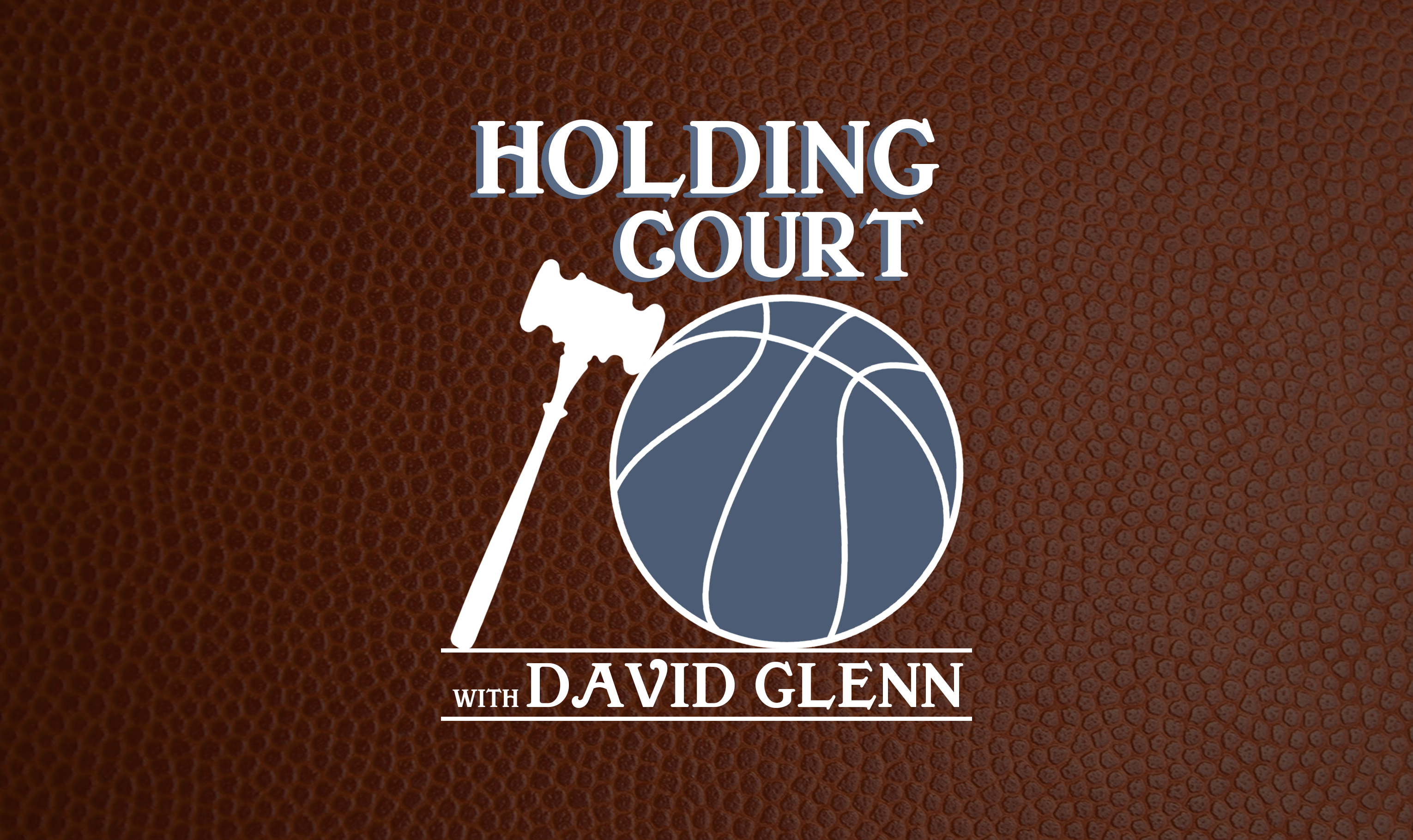2023 Tar Heels vs. 2022 Tar Heels: Exactly the Same Midseason Record, but Better Résumé, Unique Challenges
By David Glenn
It wasn’t supposed to be this way.
When North Carolina veterans Armando Bacot, Leaky Black, RJ Davis and Caleb Love talked about “running it back” last spring, after the Tar Heels’ exhilarating run to the national championship game, their clear intent was to take another shot at the NCAA title, not to duplicate the entirety of last year’s roller-coaster ride.
Nevertheless, here we are.
2021-22 UNC through 19 games: 13-6, 5-3 ACC, unranked
2022-23 UNC through 19 games: 13-6, 5-3 ACC, unranked
This year’s Tar Heels, of course, started the season as the #1 team in the preseason polls. While that status doesn’t often lead to a national championship, and teams destined for the NCAA title rarely experience the sorts of extreme peaks and valleys the Heels have encountered again this season, there are significant differences between Carolina’s 2021-22 and 2022-23 squads.
- This year’s Tar Heels have a slightly better mid-January résumé than last year’s Tar Heels.
Although the two teams’ records are exactly the same at this point, this year’s Carolina squad has demonstrated a better brand of basketball overall.
How so? Well, this year’s Tar Heels have had a legitimate chance to win in the second half of almost every game, and their efficiency numbers have been ranked among the nation’s top 25 teams all season. Neither of those statements applied at this point last season.
During last year’s 13-6 start, Carolina had been absolutely annihilated in four of its six losses: Tennessee (89-72), Kentucky (98-69), Miami (85-57) and Wake Forest (98-76). The two ACC games happened on the road at a relatively late stage (latter half of January) of the season. This year’s Tar Heels have had only one double-digit defeat, 77-65 at Indiana, back on Nov. 30.
Meanwhile, the higher caliber of play of this year’s Tar Heels has been reflected in their efficiency ratings (e.g., KenPom, ELO). While in and out of the Associated Press and coaches’ polls because of their middling record, which includes a 1-6 mark in Quad One games, Carolina has remained in the top 25 of the efficiency rankings all season. In 2021-22, UNC didn’t reach that level of efficiency on a consistent basis until its NCAA Tournament run.
- Hubert Davis gradually shrunk his playing rotation last season; he’s gradually expanding it this season.
A year ago, one reason the team’s “Iron Five” theme developed with its starting lineup was that two of the Tar Heels’ top nine players left the team at midseason. This year, thanks to the emergence of several young players, that trend is moving in the opposite direction.
Around this time last season, forward Dawson Garcia and guard Anthony Harris left the team. Garcia, who started 12 times in his 16 appearances for UNC, didn’t play at all after Jan. 22 and announced in mid-February that he was staying home in Minnesota to deal with family medical issues. Harris, an occasional sparkplug who was averaging about 12 minutes per game off the bench, didn’t play after Jan. 8, reportedly for academic-related reasons.
During the 2022-23 season, sophomore guard D’Marco Dunn, freshman guard Seth Trimble and freshman forward Jalen Washington have seen their minutes increase over time.
“I talk to these guys a lot about being ready. I told them that coming off the bench and being ready to play 25 minutes or 10 minutes, that’s hard; I’ve been there before (as a former UNC/NBA player),” UNC coach Hubert Davis said. “But that’s your job, that’s your responsibility: to be ready. I think (the reserves’ recent success) shows a lot about their preparation and the way they have practiced. … That consistency, off the bench on both ends of the floor, allows us to be an even deeper team.”
Dunn, who has averaged about 17 minutes per game off the bench since missing most of December with a hand injury, played by far the best game of his college career Saturday at Louisville. He had a career-high 14 points (5-7 FG, 2-3 threes, 2-2 FT), five rebounds, two steals, one assist and one block in a career-high 25 minutes, while also playing effective, high-energy defense against El Ellis, the Cardinals’ point guard and best player.
Trimble, a physically strong point guard with great quickness and defensive instincts, has played 11 or more minutes in nine of the Tar Heels’ last 11 games. He had a career-high 11 points on Jan. 4 against Wake Forest but is much more valuable defensively at this stage of his career.
Washington, a 6-10, 225-pounder with a soft shooting touch, missed the first nine games of the season because of injury and played only 19 total minutes in UNC’s first 16 games. Then, after injuries to Bacot and starting forward Pete Nance, Washington played 27 minutes (with 13 points and six rebounds) in the Heels’ loss at Virginia and, with Bacot back, 19 minutes in their win at Louisville. Washington may see limited action with Bacot and Nance both healthy again.
- Although fifth-year transfer Brady Manek gradually found a perfect niche with the Tar Heels last season, fifth-year transfer Pete Nance still is seeking the right fit this year.
After almost entirely coming off the bench in November and December of last season, Manek entered the starting lineup on Jan. 5 and never looked back. By late January, Manek and the Tar Heels were playing much better, individually and collectively, and in mid-February the Heels launched their stunning late-season run, winning 11 of 12 games before falling to Kansas.
Manek, now thriving as a professional in Australia, meshed so well with Carolina that he exceeded anything and everything he had done as a four-year starter at Oklahoma. With the Sooners, Manek averaged about 12 points per game while shooting 45 percent from the field and 37 percent on 3-pointers. With the Tar Heels, he averaged about 15 points per game while shooting 49 percent from the field and better than 40 percent on 3-pointers.
Nance, a starter for three of his four years at Northwestern, had such a sensational senior season (15 ppg, 7 rpg, 50% FG, 45% threes) with the Wildcats that he was deemed a near-perfect fit to follow Manek in a stretch forward-type role, but that hasn’t happened yet.
Nance, often described by Davis as an NBA-caliber player, has been a solid performer (11 ppg, 6 rpg, 49% FG, 35% threes) for Carolina, and he showed some Manek-like star power in intense environments while posting double-doubles in UNC’s road losses to Indiana (15 points, 12 rebounds) and Virginia Tech (18 points, 10 boards). However, his long-range shooting has been inconsistent, and he recently was bitten by the injury bug, too.
In the Heels’ last game of 2022, at Pitt on Dec. 30, Nance suffered a back injury. In the next four contests, he played only two total minutes. With Nance returning to the lineup against Boston College on Tuesday, UNC will be seeking a second-half surge similar to that of last season.
- Caleb Love’s 3-point shooting woes and defensive lapses are complicating this year’s journey.
Most of the time, basic statistics and advanced analytics numbers match what the eyeball test is telling you is true.
Love’s three years at UNC illustrate the former category well. He was a horrible 3-point shooter as a freshman (27%), he improved dramatically as a sophomore (36%), and he has regressed badly in this category as a junior (27%). Nevertheless, he takes far more 3-pointers than any other Carolina player, such that the team’s percentage from long range (32%) has gone from a significant strength to a major weakness and now ranks among the worst in the ACC.
Regarding analytics, it likely surprises nobody, for example, that UNC’s “efficiency margin” this season (that’s the Tar Heels’ efficiency margin with a specific player on the floor minus their efficiency margin when that player is on the bench) changes most based on whether Bacot is on the floor. Translated: UNC is much, much better when Bacot is in the game. Duh.
Similarly, as the numbers below reflect, the Tar Heels get their biggest offensive efficiency lifts from Dunn, Love and Bacot. Defensively, Johnson, Davis, Bacot, Nance, Trimble and Black each contribute to an efficiency upgrade.
Analytics numbers sometimes can be confusing, though, especially the defensive data. For example, there are multiple individual-oriented defensive metrics that place Black as the Tar Heels’ top stopper (which passes the eyeball test) and Bacot, Davis, Love, Nance and Trimble as other strong defenders. However, some team-oriented defensive metrics (see below) describe Love as a massive liability at that end of the floor.
There may be plenty of room for debate regarding the details and causes of these numerical themes, including how they apply to Love (an honorable mention All-ACC selection last season) specifically, but there’s no denying the current bottom line: The Tar Heels are a much more efficient team overall when Love is on the bench, and their defensive efficiency absolutely plummets when he’s in the game.
UNC’s Total On-Court/Off-Court Efficiency Margins
(Among players with 10+ minutes per game)
- Bacot: +15.74
- Dunn: +10.43
- Davis: +7.95
- Trimble: +1.07
- Nance: +0.63
- Black: -1.44
- Johnson: -1.81
- Love: -10.53
UNC’s Offensive On-Court/Off-Court Efficiency Ratings
- Bacot: +10.14
- Dunn: +9.61
- Love: +8.83 (UNC has been much better offensively with Love ON the court)
- Davis: +3.35
- Black: -1.38
- Nance: -2.13
- Trimble: -3.63
- Johnson: -9.66
UNC’s Defensive On-Court/Off-Court Efficiency Ratings
- Johnson: +7.85
- Bacot: +5.60
- Trimble: +4.70
- Davis: +4.60
- Nance: +2.76
- Dunn: +0.82
- Black: -0.07
- Love: -19.36 (UNC has been MUCH better defensively with Love OFF the court)
Note: UNC efficiency data (through Jan. 20) courtesy of Adrian Atkinson (@FreeportKid).
With only 12 regular-season games remaining, and the unranked Tar Heels far removed from their preseason #1 ranking, this particular Love story remains Carolina’s most complicated riddle.
(featured image via Todd Melet)
 David Glenn (DavidGlennShow.com, @DavidGlennShow) is an award-winning author, broadcaster, editor, entrepreneur, publisher, speaker, writer and university lecturer (now at UNC Wilmington) who has covered sports in North Carolina since 1987.
David Glenn (DavidGlennShow.com, @DavidGlennShow) is an award-winning author, broadcaster, editor, entrepreneur, publisher, speaker, writer and university lecturer (now at UNC Wilmington) who has covered sports in North Carolina since 1987.
The founding editor and long-time owner of the ACC Sports Journal and ACCSports.com, he also has contributed to the Durham Herald-Sun, ESPN Radio, the New York Times, the Washington Post, Raycom Sports, SiriusXM and most recently The Athletic. From 1999-2020, he also hosted the David Glenn Show, which became the largest sports radio program in the history of the Carolinas, syndicated in more than 300 North Carolina cities and towns, plus parts of South Carolina and Virginia.
Chapelboro.com does not charge subscription fees, and you can directly support our efforts in local journalism here. Want more of what you see on Chapelboro? Let us bring free local news and community information to you by signing up for our biweekly newsletter.


